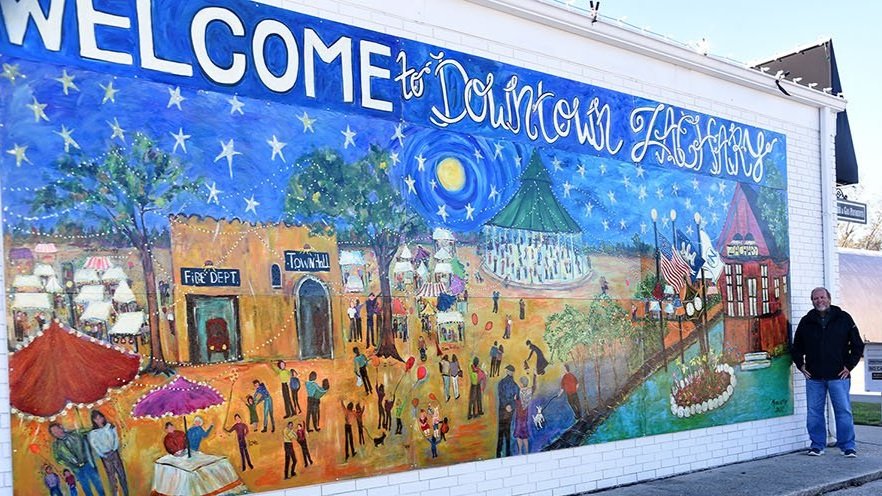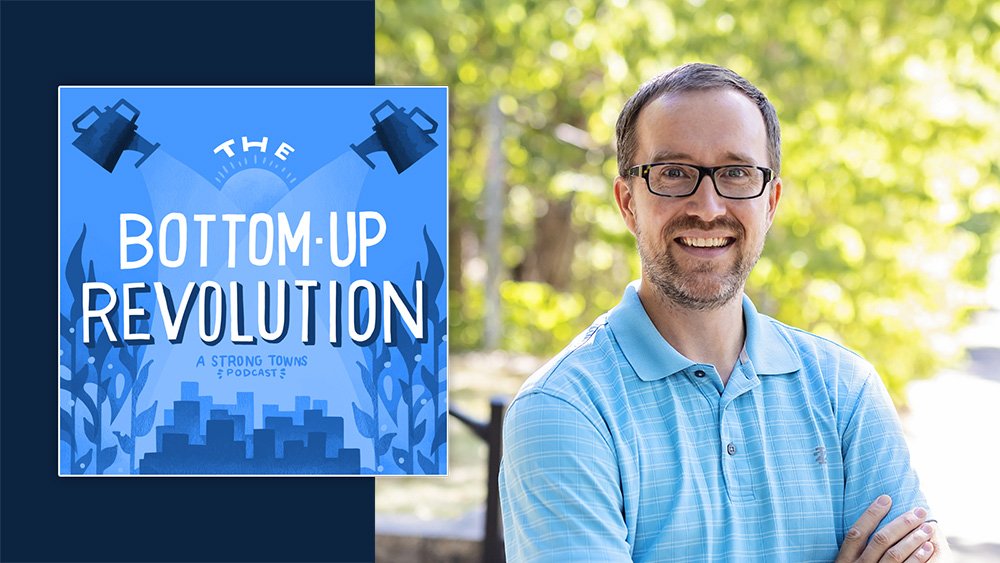Strong Towns Need Strong Downtowns
(Source: City of Zachary.)
Zachary, Louisiana, is growing. Fast. Over the last two decades, the population has nearly doubled, from approximately 11,000 people in 2020 to more than 19,000 today. Once a rural farming community, Zachary is increasingly becoming a bedroom community for Baton Rouge to the south. With those changes come the inevitable growing pains. Residents and local leaders are navigating important decisions, including controversial decisions about new developments that involve overlapping jurisdictions—city, school, and fire districts, and the East Baton Rouge Parish—and sometimes competing priorities as well.
Amanda Lanata grew up not far from there, in the town of Saint Francisville. After attending college in Mississippi, she returned to Louisiana. She and her husband Nick settled in Zachary a year and a half ago to be close to their families. Amanda co-owns a small business with her father, and she is the Assistant Director of the Louisiana Main Street program.
Strong Towns members Amanda and Nick have been intentional about meeting local officials, decisionmakers, and other advocates in their chosen city. “What’s nice about working in small town communities like Zachary,” Amanda says, “is that it’s very accessible.” They started watching city council meetings online last year, then began attending in person about six months ago. “At one meeting, you can meet everyone.”
It has been important to the Lanatas to introduce themselves in a non-partisan way. They tell local leaders: “We’re not trying to be political; we’re just trying to improve our community.” That posture has been received well. Even if they may sometimes disagree with council members on how best to make Zachary stronger, I imagine that Amanda and Nick are seen, first and foremost, as allies rather than adversaries.
Amanda also positions herself as a resource through her role with Louisiana Main Street. Since 1984, the Louisiana Main Street has been helping communities revitalize their downtowns and neighborhood commercial districts. Most of the program’s work is focused on towns with 50,000 people or less. There are 36 Louisiana Main Street communities in all.
“At Main Street, we help people save their towns,” Amanda tells me. “We’ve all seen or experienced firsthand towns that are struggling. Businesses are closing. Young people are moving away. Downtown buildings are boarded up and closed down.”
A struggling downtown bodes poorly for everyone in the community. Value-per-acre analyses show that a walkable downtown—even a neglected one—can be far more financially productive than the ring of big-name big box stores on the outskirts of town. Downtowns are also, historically, where people have come together. One of the questions on the Strong Towns Strength Test goes like this: “If there was a revolution in your town—or a protest, parade, festival, or town emergency—would people instinctively know where to gather?” Even after decades of the Suburban Experiment, which hollowed out so many of our cities, the answer is still the same: downtown.
Amanda talks about downtowns as the economic and social hubs of our towns and cities. They are the heart and soul of our communities, she says. And they are the “front door,” not only for tourists but for new businesses: “If you have developers or investors coming in to scope out your town, where do they go first? They go to your downtown.”
Main Street’s approach to revitalizing downtown is a time-tested framework that’s been implemented in more than 2,000 communities across the United States. Amanda describes the Main Street Approach as a holistic economic development program that’s blended with historic preservation. “We look at the buildings in our downtowns—the wealth that our community has accumulated over generations—and we ask: How can we make this viable for the future? That might be putting a business there or doing upper-story housing.”
(Source: Louisiana Main Street.)
The results are speaking for themselves. A 2017 study by Main Street America found a national reinvestment ratio of 26 to 1. In Louisiana, Main Street communities have been more resilient during economic downturns. “I’m a very practical person,” Amanda tells me. “I like to get things done. When I first heard about Main Street ten years ago, I was floored. I could see the results and that it works.”
The United States saw record numbers of new business start-ups during the pandemic. The 4.4 million new businesses started in 2020 was an all-time high. Even that record was smashed in 2021 with 5.4 million. Louisiana Main Street helps small businesses like these. Help comes in a variety of forms: workshops, trainings, technical assistance, helping new businesses locate or renovate properties, redevelopment grants, incubator spaces, and more. In the U.S., most economic incentives are funneled toward large corporations. Those sometimes have their place. But Amanda points out that half of America’s private workforce is employed by small businesses, which don’t get the same kind of incentives. “The big stuff is important, we need that,” Amanda says, “but at Main Street we’re helping the smaller guys.”
There’s an awful lot of resonance between the work Amanda Lanata does as the Assistant Director of Louisiana Main Street and her local advocacy as a Strong Towns member. (In fact, she first discovered Strong Towns through a Main Street America newsletter.) In both spheres, she is promoting incremental development, championing walkability, and showing cities that the highest-returning investments probably aren’t going to be on the new office park on the outskirts of town—but rather downtown.
This week, Amanda is traveling to Richmond, Virginia for the national Main Street Now conference. The theme—”Together, Again”—seems appropriate coming out of the pandemic. Amanda tells me she is excited to gather with others, to learn from one another, and to be inspired and encouraged and re-energized. Back home in Zachary, she and her husband Nick are starting a Strong Towns Local Conversation, a neighborhood group that takes the Strong Towns approach and puts it into action.
Amanda sees both Strong Towns and Main Street as grassroots, bottom-up movements doing complimentary work. She hopes there will be even more of an intermingling between the movements. After talking to Amanda, I hope for that too. I’m grateful she can be a bridge.






Marion, Ohio’s story is one of resilience and community. Devastated by economic disinvestment and the opioid epidemic, residents realized it was up to them to turn things around. Here's how they're doing it.